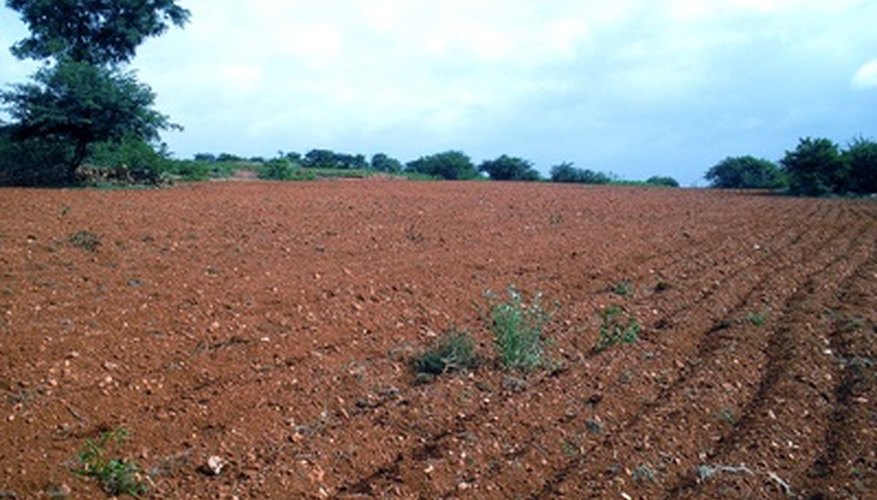Topsoil is the uppermost layer of soil on the earth's surface. It is a valuable resource because it contains the organic matter and nutrients necessary for plant growth. Numerous physical properties are used to classify and describe topsoil. One such physical property is density.
Density
The density of topsoil describes the mass of topsoil that takes up a certain volume of space. Topsoil density usually ranges from 1.1 to 1.4 grams per cubic centimetre. The range in density exists because all topsoil is not the same. Factors such as soil texture, soil structure and the amount of organic matter will affect topsoil's density.
- The density of topsoil describes the mass of topsoil that takes up a certain volume of space.
Topsoil Texture
Topsoil contains three types of soil particles: sand, silt and clay. Sand particles are coarse. Silt and clay particles are fine. Texture is used to describe the relative amounts of sand, silt and clay in the topsoil. Fine-textured topsoil, containing greater amounts of silt and clay, generally has a lower density than course, sandy topsoil.
- Topsoil contains three types of soil particles: sand, silt and clay.
Topsoil Structure
Soil structure refers to the arrangement of particles in the topsoil. Topsoil containing particles that are tightly packed with little air space in between is more dense than topsoil containing loosely packed particles.
Organic Matter
Organic matter is the part of the topsoil that comes from the decomposition of plant or animal material. Adding organic matter to topsoil decreases its density by altering its structure and increasing the amount of air space.
Importance of Density
Topsoil's density greatly impacts a plant's growth. The ideal density for topsoil is 1.25 grams per cubic centimetre or less. Topsoil that is too dense prevents the plant's roots from spreading and limits the movement of water and nutrients required for the plant to grow.
